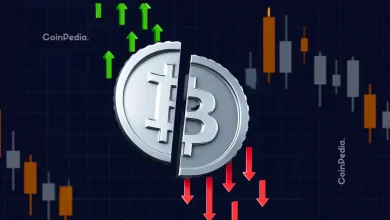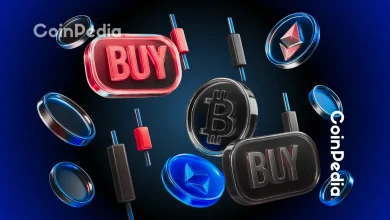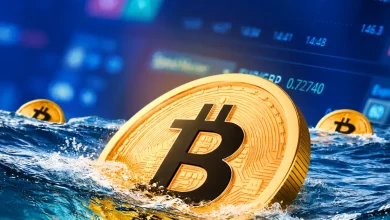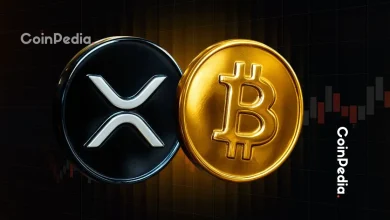
Global liquidity rebounds as U.S. Treasury halts withdrawals, setting the stage for renewed crypto and equity growth, with XRP in focus.
XRP could benefit from rising liquidity, regulatory clarity, and growing institutional adoption, positioning it for potential market outperformance.
The global financial system may be entering a new growth phase, with analysts pointing to a key factor behind the shift: liquidity. After months of tightening, the U.S. Treasury’s liquidity withdrawal appears to be ending, setting the stage for new capital inflows into risk assets like Bitcoin, Ethereum, and XRP.
Liquidity Drains Ease, Markets Ready to Rebound
Since July, the U.S. Treasury has been pulling roughly $500 billion from the system to refill its Treasury General Account (TGA). This move temporarily slowed down markets, keeping cryptocurrencies and tech stocks in a consolidation phase.
Now, with the Treasury’s account replenished, analysts say the liquidity drain has stopped — a change that could help drive the next leg of the market’s growth. As global money supply expands again, investors expect renewed flows into equities and crypto, similar to what happened in previous bull cycles.
Experts often say liquidity, the availability of money in the system, is the single most powerful force in global markets. Historical data shows that liquidity growth accounts for nearly 90% of Bitcoin’s price movement and most of the NASDAQ’s performance.
“When global liquidity rises, risk assets like crypto tend to outperform,” macro strategist Raoul Pal said, calling it “the simplest big trade ever.”
Why XRP Could Outperform
Among major cryptocurrencies, XRP is viewed as one of the better-positioned assets for this next phase. Following its partial legal victory against the SEC, XRP now enjoys a clearer regulatory status than many competitors. Combined with Ripple’s growing network of banks and payment partners, analysts believe XRP could benefit both from speculative inflows and real-world adoption.
Market analyst Jay Claver recently pointed out that XRP’s public supply on exchanges has been steadily declining. On-chain data shows more XRP being moved off exchanges and into institutional or over-the-counter (OTC) wallets.
Claver suggests this could mark the beginning of an accumulation phase, similar to what often happens before major liquidity shifts.
“Large players seem to be preparing for system-level changes, not just chasing short-term price moves,” he said.
XRP’s Potential Role in Global Finance
Claver also raised an interesting perspective: the idea that XRP could one day serve as collateral in financial systems. Just as gold or reserves have historically supported government balance sheets, digital assets like XRP could play a similar role due to their speed, verifiability, and global accessibility.
This could become increasingly relevant as governments look for new tools to manage debt and liquidity without expanding the money supply.
A Built-In Liquidity Mechanism
According to Ripple CTO David Schwartz, XRP’s design naturally adjusts to liquidity demand. When more transactions flow through XRP-based payment corridors and the available supply is limited, the asset’s price tends to rise automatically to meet volume needs.
Claver compared this to “fluid dynamics” when the flow of value increases through a narrower channel, pressure and speed naturally rise.
At the same time, global financial systems are moving toward greater coordination. BRICS nations are exploring digital currencies, Western countries are testing central bank digital currencies (CBDCs), and Ripple continues to expand its banking partnerships.
Claver believes this may represent a “pre-activation” phase where the infrastructure for digital settlement is ready but not yet fully switched on.
The Bottom Line
As global liquidity shifts from tightening to expansion, analysts expect risk assets like crypto to benefit. For XRP, the combination of regulatory clarity, institutional adoption, and its unique role in payment infrastructure could make it one of the standout performers in the next market cycle.
While no one can predict exact timelines, experts agree on one thing: liquidity drives markets. And with global liquidity on the rise again, XRP could be among the biggest beneficiaries.
Never Miss a Beat in the Crypto World!
Stay ahead with breaking news, expert analysis, and real-time updates on the latest trends in Bitcoin, altcoins, DeFi, NFTs, and more.
FAQs
Rising global liquidity often boosts risk assets like crypto, increasing capital inflows and supporting price growth for coins like Bitcoin and XRP.
XRP benefits from regulatory clarity, growing bank partnerships, declining exchange supply, and potential institutional adoption.
XRP could serve as a fast, verifiable digital collateral, helping banks and governments manage liquidity and payments more efficiently.
XRP adjusts to transaction demand: when flow increases and supply is limited, its price naturally rises to accommodate volume needs.
Trust with CoinPedia:
CoinPedia has been delivering accurate and timely cryptocurrency and blockchain updates since 2017. All content is created by our expert panel of analysts and journalists, following strict Editorial Guidelines based on E-E-A-T (Experience, Expertise, Authoritativeness, Trustworthiness). Every article is fact-checked against reputable sources to ensure accuracy, transparency, and reliability. Our review policy guarantees unbiased evaluations when recommending exchanges, platforms, or tools. We strive to provide timely updates about everything crypto & blockchain, right from startups to industry majors.
Investment Disclaimer:
All opinions and insights shared represent the author's own views on current market conditions. Please do your own research before making investment decisions. Neither the writer nor the publication assumes responsibility for your financial choices.
Sponsored and Advertisements:
Sponsored content and affiliate links may appear on our site. Advertisements are marked clearly, and our editorial content remains entirely independent from our ad partners.








